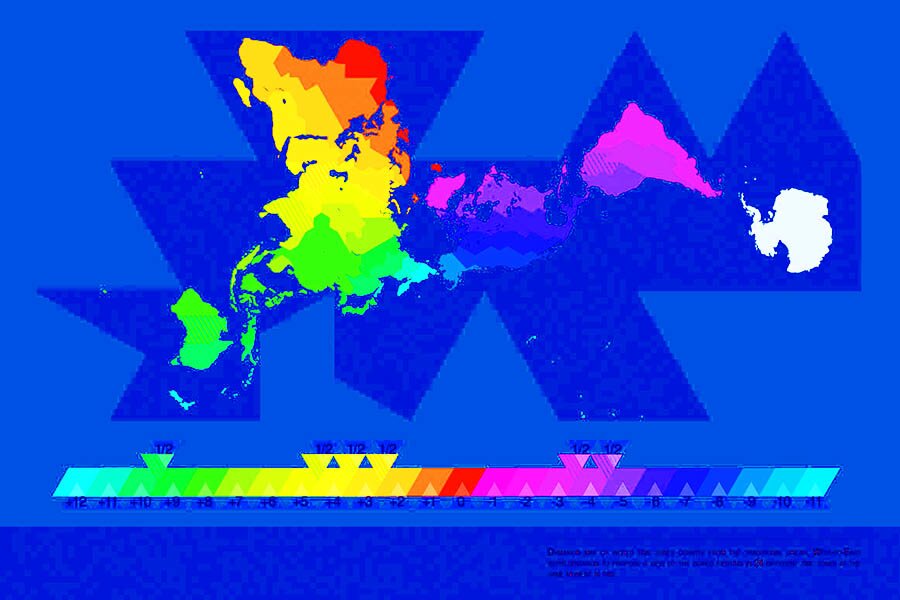Borders
As I thought about the problem of the border, the idea of borders, places in between other places, or as a colleague recently suggested to me, the space between a set of open brackets, I decided to orient this short piece toward ideas of opposition, to the cultures of oppositionality which I think are one of main focuses of border culture.
In saying this, I am not suggesting a comprehensive knowledge of the diversity and richness of that mixed zone of creativity and resistance which the borders of so many different cultures have created. Rather, my concerns are with the many different possibilities which are opened up when the “concept” of the border is invoked as a descriptive as well as analytical and interpretive strategy with respect to socio-cultural activities.
One must distinguish here between different types of opposition. There are so many ways of thinking about cultural production. The term culture is itself used in a flexible manner to refer to processes which range from community activities to individual artistic practices, from the local to the global, and from the specific to the general. Opposition can take many forms and these are in a sense a window into many different kinds of practices. Is there a difference between opposition which is oriented toward changing the state and its institutions and oppositional stances which result in the creation of a play or a painting or a novel or a film? I may in saying this go against the grain if not the substance of those for whom the act of writing for example, can also be an act against an oppressive state apparatus and what comes to mind is the impact which Salman Rushdie has had within Western and Islamic cultures. I in no way want to dispel the potential of a novel or a film for example, to change the way in which the citizens of a particular state may end up thinking about relations of power, discourse and institutional organization. Nor do I want to suggest an artificial distinction between culture and politics. However, for the purposes of this discussion, I would like to suggest a more limited if not local role for culture, an analytical stance which probes as deeply as possible into the many layers of subjective experience suggested by artistic practices which are directed toward carefully circumscribed audiences, which are defined by their eclecticism, by their indirectness, by their recognition of the specificity of the space within which they operate.
Yet, as I say this, I also recognize that the notion of the local cannot be proposed in such a potentially isolated way. The difficulties are many here and I don’t propose to deal with them in a generalized theoretical fashion. Instead, I want to focus on hybridized notions of the geographical, on the cultural mixtures which at one and the same time assert the particularity and uniqueness of local cultural spaces and yet connect to broader issues which transcend the boundaries of the local. Another way to put this is to think about the rather easy way in which the opposition between the local and the translocal came into place. My own sense is that it is derived from another opposition, marginal and mainstream. The concept of the border seems to be an attempt to find a middle ground not necessarily between these opposing forces but within their shared ground. Yet, as Stephen Muecke has suggested we end up ‘romancing the margins’ partly as a result of the way we build and sustain the oppositional relationship between the margin and the centre.[1] This has an impact on how we set about analysing the local since presumably there are presumptions of space and and maps to locate place and the categories which we use to name these relationships will have an effect on how we view and analyze them.
What I have just said can also be reframed this way. When cultural hybridization is the norm and not just an effect of transnational movements of capital and large world-wide corporations, opposition seems to be an anachronism. Yet, the paradox is that hybrid forms are in constant motion appropriating and re-appropriating the ground upon which they build their very shaky foundations. These are frames where the edges disappear into their neighbours as if there really is not a film in the projector, just the machine, the audience and the screen. The richness comes through the metaphors which inevitably end up linking the parts. Or, if I may use a more current example, the results are found in the way the connections are made and not so much in the fact that there are pieces arranged to fit into a pattern. The results are fascinating.
[1]Stephen Muecke, Textual Spaces: Aboriginality and Cultural Studies (Sydney: New South Wales University Press, 1992) 189.

